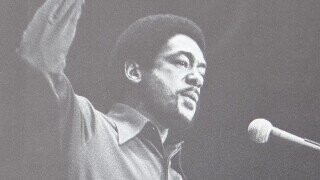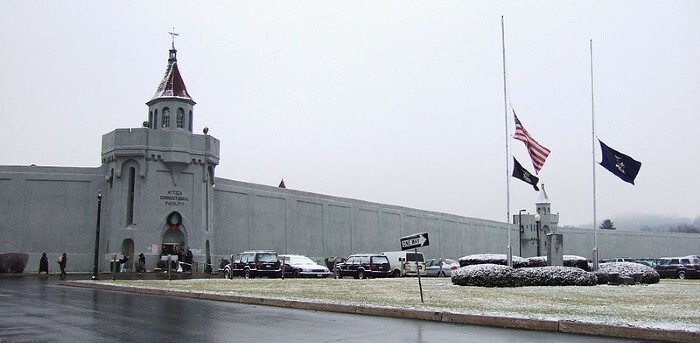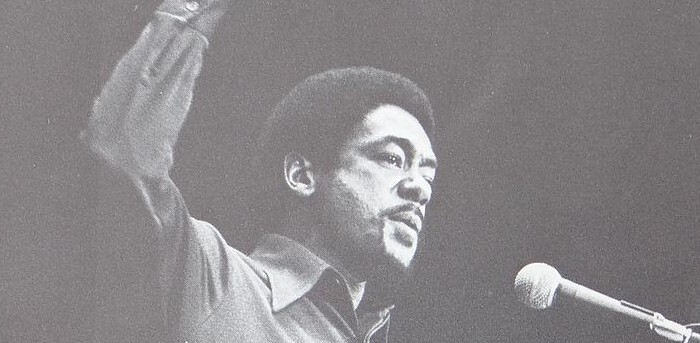What Exactly Was The Attica Prison Riot?

You might have heard someone yell “Attica!” or even looked up the Wikipedia page after that one season of Orange is the New Black, but what exactly was Attica and how did it become the battle cry of the disenfranchised? It turns out prison riots can get pretty ugly, so you should probably stop invoking it when McDonald’s screws up your order.
Conditions at Attica

Prison is never a happy fun time, but it was particularly bad at the Attica Correctional Facility in 1971. Prisoners were subjected to seemingly random beatings, their mail was read and censored, their reading was restricted, and severe overcrowding meant they were only allowed one shower a week and one roll of toilet paper per month. Imagine the itchiness.
Racism at Attica

Attica, New York is a rural community where the only real job prospects in 1971 were dairy farming or working at the prison, so it’s no surprise that all of the guards were white. The prisoner population, on the other hand, was 65% men of color, mostly black men, so it’s probably safe to believe them when they say at least some of those random beatings were racially motivated.
Other Uprisings
1970 was a prison rioty year. Just in New York, the Manhattan House of Detention and Auburn Correctional Facility were the sites of similar (if much less severe) uprisings. In fact, some prisoners from Auburn were transferred to Attica in the aftermath, so whispers of “You know how we handled this back there…” likely planted the seeds of berserkery.
Joshing and Noshing

On the day before the uprising, two guys who’d been joking around in the prison yard were beaten and taken to solitary, so the other prisoners were already pretty mad on September 9, 1971, when one of the guards responsible ordered them back to their cells after breakfast. He may not have asked very nicely, as the prisoners reacted by declaring an ass-kicking.
Faulty Welding

It might have ended there, except the “faulty welding” of the gate that separated the prisoners from the central control area that one survivor estimated to be as old as the prison itself allowed the prisoners to break through and take the guards on the other side hostage. That’s right: The whole thing was made possible by a lazy welder 40 years earlier.
Hostages
After some assault and arson, the prisoners actually lost control of most of the prison when state police showed up about an hour later. They only held onto one prison yard, where they’d taken somewhere between 38 and 42 blindfolded prison employees hostage, which was really the important part.
Demands

Shortly after taking their hostages, the prisoners of Attica issued a list of 30 demands. They ranged from the mundane (better visiting conditions, more toilet paper) to the high minded (legal representation, fair wages and working conditions) to the comical (food that isn’t “a gastronomical disaster,” negotiation through reporters) to the somewhat unreasonable (passage to a “non-imperialist” country for those who didn’t feel like being in prison anymore).
Negotiations

The New York commissioner of corrections surprisingly agreed immediately to 28 of the prisoners’ demands. They had a little more trouble, however, convincing him of the overseas vacation thing as well as amnesty for all participants for their role in the uprising. That was pretty important because…
Billy Quinn
Early on, an overzealous rioter had badly beaten and thrown a guard named Billy Quinn out a window. A lot of the prisoners didn’t even know it had happened, but two days later, they learned that he died. That meant they were looking at a lot more than kidnapping and general chaos -- this could be a murder charge.
Bobby Seale and Louis Farrakhan

Among the people the prisoners asked for to assist with negotiations were prominent black activists Bobby Seale and Louis Farrakhan. Seale showed up after he wrapped his head around the idea that the New York government was asking a Black Panther for a favor, but Farrakhan declined despite this being absolutely his sort of thing.
Storming the Prison

Another person who didn’t come was the governor, who instead simply ordered the police, after four days of failed negotiations, to drop some tear gas and start shooting up the place. A total of 39 people were killed in the attack, including 10 hostages, who had been dressed as prisoners with the hope that police wouldn’t shoot if they couldn’t tell who was who. Suffice it to say they were wrong.
No One Slit Anyone’s Throat
In the aftermath of the carnage, authorities claimed that the prisoners had slit their hostages’ throats, hoping to turn public opinion against them. While the prisoners did hold the hostages at knifepoint in a last-ditch bid for control after they were ordered to surrender just before the raid, autopsies of the dead hostages confirmed that they had all, in fact, been killed by the police.
Punishment After the Riot
If things were bad in Attica before Attica, they got even worse in the immediate aftermath of the riot. For a week, prisoners were forced to crawl naked through broken glass and literal shit in the latrines they’d dug and “run down a hall between two rows of guards who beat them as they ran,” among myriad indignities. They definitely didn’t get that better medical care they asked for.
Attica!

(Warner Bros.)
Attica became the subject of numerous books and documentaries, but it was most famously invoked by Al Pacino’s bank-robbing Dog Day Afternoon character, who chants “Attica!” at police officers who, it must be said, were in no way limiting his ability to wipe his ass.
Justice?

The prisoners decidedly did not receive amnesty for their role in the riots -- 62 of them were indicted on more than 1,200 counts of various crimes. Within a few years, however, a new governor pardoned seven of them and commuted the sentence of another, and in 2000, they settled a lawsuit against prison and state officials for $8 million. It wasn’t much divided among more than 500 plaintiffs, but much like the prison conditions, it would apparently have to do.
Top image: Unknown author/Wikimedia Commons